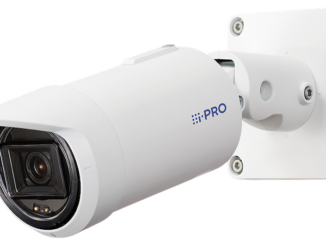
The IFSEC Insider Video Surveillance Trend Report 2023, IFSEC’s annual look at the video surveillance market, has just been released, citing big moves to the edge and the persistence of NVR-based storage.
The 2023 version explores the core trends in video surveillance, as well as providing an update on the state of the market, covering everything from the uptake of edge-based technology to adoption of the cloud and how cameras are contributing towards smart buildings, cities and ecosystems.
“It’s our biggest one yet, 28 pages of content detailing results from over 500 industry professionals involved in the installation, maintenance, procurement, supply and active use of video surveillance systems,” wrote IFSEC Insider Managing Editor James Moore.
“The impacts of rising inflation, geopolitical events and supply chain issues have been keenly felt by governments, businesses and organisations across the globe. These are macroeconomic events – but so too is the evolution of technology. The proliferation of cloud-based platforms and AI usage has continued at pace, with the latter arguably set to be a defining topic of this generation.”
The report notes that the sector continues to embrace new technology and recognise that video surveillance systems are now adding value outside of the traditional security sphere to organisational planning, operations and resilience.
View this article in the Line of Defence Magazine Summer 2023-24 downloadable digital edition…
“Video surveillance remains a fundamental piece of the jigsaw in securing people, places and assets – but it is now so much more than that,” continued Moore. “As we’ve explored in the previous two market reports, a large percentage of systems are now also being used to solve operational challenges, or provide additional business intelligence, due to the sheer volume of data cameras and their corresponding analytical functions collect.”
A range of topics are explored, including a dedicated chapter on the adoption and usage of Artificial Intelligence-based software. Just how is AI being used by security, facilities and IT professionals? And crucially, where do they see the challenges, opportunities and threats? The report includes information on next steps, such as future regulation and deepfakes.
The executive summary raises five key takeaways from the Report:
- AI is actively supporting security – but there is demand for regulation and guidance
- Over half of respondents are now using the cloud somewhere in their video surveillance system process
- Demand for video surveillance remains strong, but are there tougher times ahead?
- Buyers of video surveillance technology are actively considering sustainability credentials
- Video surveillance systems will have a central role to play in smart building and city development
Edge-based technology
The report notes that at IFSEC 2023, Omdia’s Physical Research and Analysis Manager, Oliver Philippou, had identified System on Chip (SOC) technology as one of the key areas of growth ahead for the sector.
SOC technology in cameras has enabled the deployment of deep learning analytics to take off, explained Philippou, because it allows processing to take place on the camera itself – or at the ‘edge’. This significantly reduces bandwidth and storage requirements.
With edge processing, video data can be processed and analysed on the camera itself, removing the need to send all the footage to a centralised server, database, or even to the cloud. “Whereas 30% of network cameras deployed today have an advanced SOC processor built in,” states the Report, “by 2026 this will be closer to 70%.”
Video Management Systems
The survey that provides the data upon which the report is based found that 68% of organisations have their cameras connected to some form of VMS system, while 14% expect to implement ta VMS in the next two years. 18% stated that they don’t have a VMS platform in place.
The majority of respondents that did not have cameras connected to a VMS system were from SMEs.
“Most SMEs don’t need the functionality or cost of a sophisticated, enterprise-class VMS platform,” stated Jamie Barnfield of IDIS Europe in the Report. “So, it’s worth integrators and end-users looking out for solutions that come with totally cost-free client software that is easy to use for non-security operatives, which they can also operate via mobile apps to ensure their premises, staff, and assets are safe and secure out of hours and on the move.”
“Server and NVR-based systems continue to be in high demand as they offer the most cost-effective and secure method of storage,” stated James Min, Managing Director, IDIS Europe. VMSs, he added, also make system design and retention calculations quick and easy.
“And unlike cloud they give end-users the assurance that if they want to upgrade to higher resolution cameras or extend retention periods they are not faced with spiralling costs.”
Cloud solutions
According to the survey, over half of installers and consultants are recommending cloud-based platforms, albeit with some level of caution. 42% continue to recommend or install only on-premise systems. 28% of end users answered that they are not considering a move to the cloud.
20% of end user respondents are actively considering moving some or all of their operations to the cloud in the next two years.
A hybrid approach is most common. 32% of end-users stated that they utilise the cloud for video storage purposes, 12% for video analytics, and 9% for VMS.
Cyber security and data protection concerns were cited by 59% of respondents as the major barrier to transitioning to cloud.
Poor internet connection or bandwidth restrictions were cited as a barrier by 56% of respondents given the impact of these issues on the quality of video footage streamed to cloud-based video management systems. Interestingly, 36% of respondents stated they or their customers aren’t particularly motivated to move from the upfront cost model of on-premise storage to the opex model of cloud storage. Nevertheless, 77% of security, facilities and IT professionals see benefits or opportunities to be gained from utilising the cloud for video surveillance purposes.









